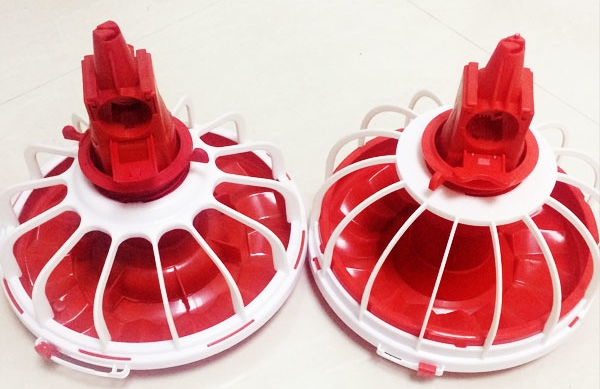At present, chicken battery cages are used for broiler breeding, and it is generally adopted that the chickens are fed ad libitum and stayed up late. Although this feeding method is divided in the feed supply, it does not restrict the feeding, and does not pay attention to the cultivation of the broiler body, so that various diseases such as ascites, itching, and leg diseases are likely to occur in the late stage of broiler growth. If the growth period of the broiler is divided into three stages for differential feeding management, the above-mentioned diseases can be effectively avoided, thereby greatly improving the economic benefits of feeding and reducing the feeding cost.
1. Division of three stages
According to the physiological characteristics of chicken cage broilers, just out of the shell of the chicken villi short and thin, and the temperature of the adult chicken about 3℃ lower.After the 4th day of age, the body temperature gradually increased, and reached the adult chicken’s body temperature at the 10th day of age. Chicken gastrointestinal volume is small, poor digestion of food, but rapid growth. Therefore, according to these physiological characteristics and growth rules, the breeding and management of broiler chickens can be divided into the following three stages: the first stage is 0 ~ 14 days old, the second stage is 15 ~ 25 days old, and the third stage is 36 days old to the market.

2. Feeding technical points at each stage
The first stage: At this stage, as the chicks have just transferred from the hatchery to the brooding room, some chickens will be stored or transported over long distances, subjected to stress such as hunger and thirst, and in a new living environment. Therefore, the main point of feeding management at this stage is to adapt the chicks to a new living environment as soon as possible, reduce stress, reduce the incidence of diseases, and increase the growth rate. Because the 7-day-old body weight of broilers has a large positive correlation with the weight of the slaughter.
The second stage: At this stage, the chicks have basically adapted to the new living environment and gradually entered the rapid growth period. Therefore, the main task at this stage is to improve the body structure of the chicks, promote the formation of the chicken body frame, promote the development of the internal organs of the broilers and the strong and strong legs, and lay a solid foundation for the next stage of growth and development, and promote the rapid growth and development in the later stage. Suffering from disease. Tests have shown that feeding chicken broilers after 14 days of age for 3 weeks can significantly improve the effective utilization of feed and the survival rate of broilers. The inhibition of broiler growth at this stage can be fully and effectively compensated in the third stage.
The third stage: At this stage, the body frame of the broiler has been formed, and the body is strong and the metabolism is strong. The main technical point at this time is to take all effective measures to promote the feeding and digestion and absorption of broilers in chicken cages, reduce the consumption of the body, and maximize the conversion rate of feed.